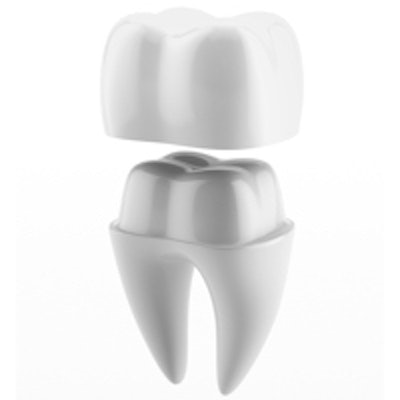
Nonimplant restorative work, aesthetic procedures, and extractions are the most commonly done procedures by general dentists (GDs), according to the findings of a new survey published in BMC Oral Health (January 22, 2015). Also, more than 80% of dentists in private practice reported working more than 32 hours a week, while only 52.3% of those in nonprivate practice did so.
In this study, researchers investigated whether and how often general dentists provide specific dental procedures, such as endodontic therapies, periodontal therapies, implants, among others. They wanted to test the hypothesis that the kind of procedure provided is significantly associated with various characteristics regarding the dentist, practice, and patient population. The large survey included 2,367 general dentists who had enrolled in the U.S. National Dental Practice-Based Research Network as of October 31, 2013.
In the survey, 954 practitioners reported as being in private practice and 135 reported as being in nonprivate practice. The data included are self-reported and may not reflect the dentists' actual behavior, the researchers noted. The large number of those in private practice compared with those who self-reported as being in nonprivate practice should also be recognized as a component of the data. The questionnaires did not ask how often procedures are referred to specialists, the researchers noted.
Outcomes
Whether general dentists perform procedures themselves or refer patients to specialists may be related to changing economic demand and the needs of their patients, according to the study authors.
"As long as they are capable of providing the service to the standard of care, GDs substitute for a specialist's care, instead of complementing it, which has economic and delivery system implications," they wrote.
The authors hypothesized that when the general dentists were in a practice setting without a specialist onsite, then they would be more likely to provide a wider range of services. They also hypothesized that the reverse would be true if a specialist were available onsite. Both hypotheses were borne out.
The outcomes were how commonly (classified as not at all, occasionally, or routinely) each of 10 dental procedures was provided by a general dentist. The results are shown in the table below.
| Percentage of procedures provided by GDs | |||
| Procedure | Not done | Occasionally done | Routinely done |
| Nonimplant restorative (amalgams, composites, crowns, veneers, bridges, posts, foundations, etc.) | 2% | 2% | 96% |
| Aesthetic procedures (done for aesthetic reasons only: composites, crowns, veneers, etc.) | 5% | 36% | 59% |
| Extractions (surgical & nonsurgical) |
5% | 31% | 64% |
| Removable prosthetics (full & partial) | 6% | 38% | 57% |
| Endodontic therapy, anteriors/premolars | 16% | 26% | 58% |
| Endodontic therapy, molars | 38% | 26% | 36% |
| Implants (prosthetic & surgical procedures) | 39% | 39% | 22% |
| Periodontal therapy, nonsurgical (includes scaling/root planing) | 40% | 37% | 23% |
| Orthodontic treatment | 68% | 23% | 9% |
| Periodontal therapy, surgical | 69% | 26% | 6% |
Several dentist characteristics were substantively related to the kinds of procedures performed, the study authors noted. Several patient characteristics were substantively related to specific procedures: age group, ethnic and racial distributions, insurance coverage, and visitation behavior. Interestingly, ADA and Academy of General Dentistry (AGD) members were more likely to do their own implants, compared with non-ADA or non-AGD members, they reported, without listing figures.
"Similar to the circumstance with periodontal surgery, it is possible that provision of endodontic services is a means for GDs to adjust to the availability of dental specialists and to overall demand for services in their practices," the authors wrote.
Dentists' gender also was a factor: Male general dentists in the survey did more aesthetic procedures, placed removable prosthetics and implants, performed more endodontic work, and did more periodontal surgeries. These results reflect the outcomes of similar studies, they noted.
Locations and insurance
Dentists who provide care at more than one location reported doing more extractions and less restorative care, including aesthetically focused restorative care, the researchers found. Inner-city and rural practices were more likely to provide extraction and removable prosthodontic procedures, while suburban and urban practices (not inner city) were more likely to provide implants.
“As dental insurance changes or expands to other patient populations in the future, GDs may adjust their mix of services to adapt to this changing demand.”
Private practices, compared with clinics with large public sources of funding, are more likely to provide "higher-end" services, such as restorative care and aesthetically focused restorative care, endodontics, implants, and orthodontics.
Dentists' experience and whether they worked full or part time also were factors related to many of these procedures, according to the authors. For example, experienced dentists performed fewer extractions but more periodontal surgery, they found. Dentists with more than 10 years of experience were more likely to refer endodontic work.
As expected, the services provided were substantively related to patient age group and race, the authors noted. But when patients had insurance, other categories were no longer a factor.
The dentists were more likely to provide restorative care, aesthetically focused restorative care, and endodontics when their patients had more private insurance coverage. Correspondingly, patients with public insurance or those who relied on free or reduced-fee care got lower-end procedures, they found.
"As dental insurance changes or expands to other patient populations in the future, GDs may adjust their mix of services to adapt to this changing demand," the authors wrote.
Conclusion
Although the study design precluded direct cause-and-effect conclusions, the researchers inferred that effects from a large number and broad range of factors seem to influence which procedures general dentists provide in their practices.
"These findings may have implications for how GDs respond to the changing picture of dental economics and dental care utilization, demography of patient populations, the scope of practice, changing delivery models, access to care, and their evolving role in primary care," the study authors concluded.



















